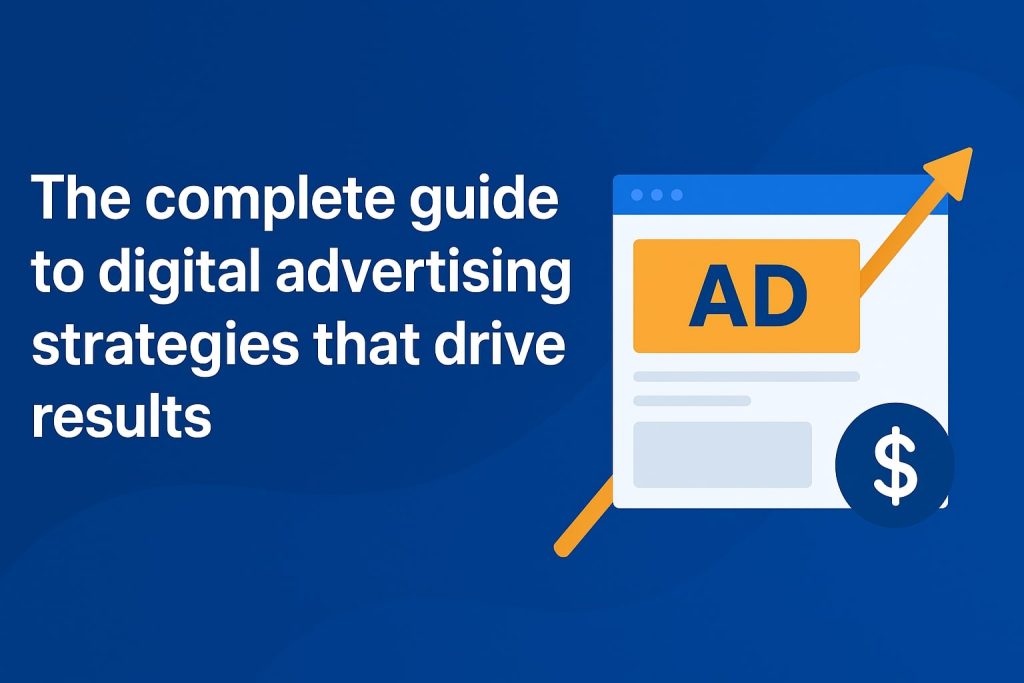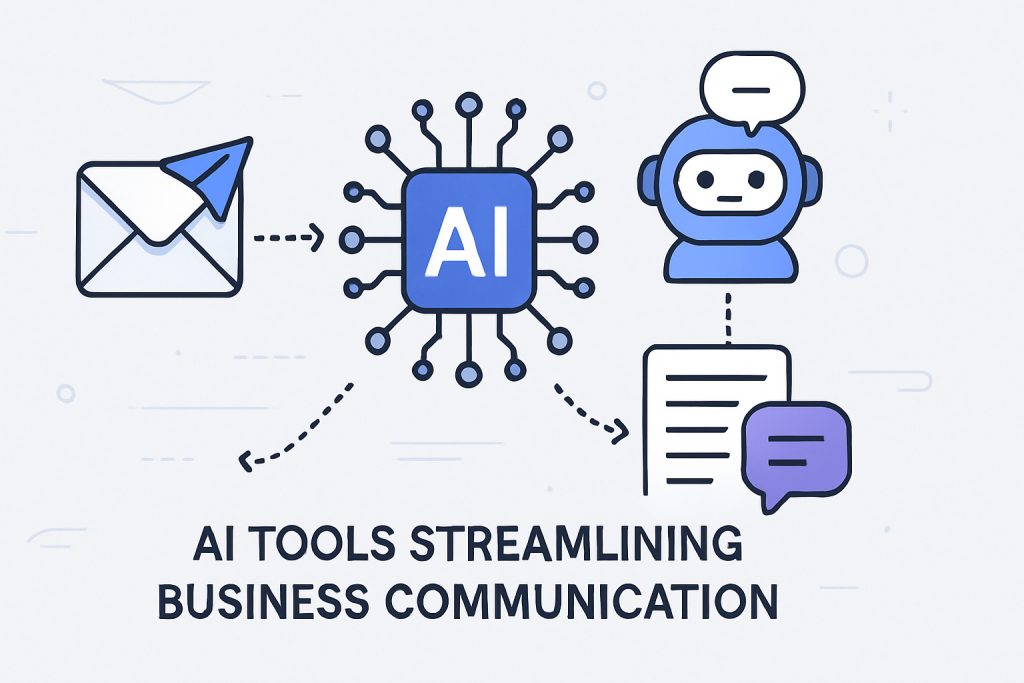In today’s competitive digital landscape, businesses spend over $720 billion annually on digital advertising, making it the dominant force in modern marketing. With 70 percent of total ad spend now flowing to online channels, understanding effective advertising strategies has become essential for any business looking to thrive.
Digital advertising encompasses everything from search engine marketing and social media campaigns to display ads and programmatic automation. The key to success lies not in choosing a single approach but in developing an integrated strategy that leverages multiple channels to reach your audience at every stage of their customer journey.
Search engine advertising: capturing high-intent traffic
Search engine advertising represents the foundation of most successful digital campaigns, accounting for nearly 39 percent of all digital ad budgets. When users search for specific products or services, they’re displaying clear purchase intent, making search ads one of the highest-converting formats available.
The power of search advertising lies in its ability to connect businesses with customers at the exact moment they’re looking for solutions. Whether someone searches for “best project management software” or “digital marketing agency near me,” search ads allow you to position your business directly in front of these high-intent prospects.
Successful search campaigns begin with comprehensive keyword research. Tools like Google Keyword Planner help identify terms with sufficient search volume while maintaining manageable difficulty scores. The sweet spot typically falls between keywords with over 1 000 monthly searches and difficulty scores below 45, providing the right balance of opportunity and achievability.
Organizing keywords into tightly themed ad groups allows for more relevant ad copy and landing page experiences. For example, a software company might create separate ad groups for “project management tools,” “team collaboration software,” and “task tracking apps” rather than lumping all keywords together.
Quality Score optimization directly impacts both ad placement and cost-per-click. Google evaluates the relevance of your keywords, ad copy, and landing pages to determine Quality Scores. Higher scores lead to better ad positions at lower costs, making optimization a critical investment in long-term performance.
Ad extensions provide additional functionality to search ads. Features like sitelinks, callouts, and structured snippets can increase click-through rates by 10–15 percent while providing more information to potential customers. Location extensions are particularly valuable for local businesses, displaying address information directly within ads.
Automated bidding strategies such as Target CPA and Target ROAS can optimize bids across thousands of auctions daily. The key is choosing the right strategy based on campaign goals and available conversion data.
For a deeper dive into advanced search-engine tactics, see How to create effective search engine advertising campaigns
Social media advertising: building brand awareness and engagement
Social media advertising has become a $207 billion industry, essential for reaching today’s connected consumers. With over 5.4 billion people active on social platforms, social media offers unparalleled opportunities to build brand awareness, drive engagement, and generate conversions.
The unique advantage of social media advertising lies in its sophisticated targeting capabilities. Platforms like Facebook and Instagram allow advertisers to reach specific demographics, interests, behaviors, and even life events. LinkedIn offers professional targeting based on job titles and industries, while TikTok provides access to younger audiences through native video content.
Creative optimization drives success more than any other factor. Unlike search ads where text dominates, social media thrives on visual storytelling. Video content generates 85 percent higher engagement rates, with short-form video becoming the dominant format across platforms. The key is creating thumb-stopping content that feels native to each platform rather than overtly promotional.
Platform selection requires understanding where your audience spends time. Facebook remains the largest advertising platform with nearly 2.2 billion monthly users, making it ideal for broad reach campaigns. Instagram excels for visual brands and younger demographics, while LinkedIn delivers superior results for B2B marketing.
Campaign objective alignment ensures your efforts support broader business goals. Awareness campaigns build recognition through reach and impressions, consideration campaigns drive traffic and engagement, and conversion campaigns focus on specific actions like purchases or lead generation.
Advanced retargeting capabilities allow you to re-engage previous website visitors or existing customers. Custom audiences built from email lists, website traffic, or app users enable highly personalized experiences. Lookalike audiences expand reach by targeting users similar to your top customers.
Automated budget optimization features like Campaign Budget Optimization (CBO) and automatic placements test ads across all available inventory to find the most cost-effective options. Shoppable ads integrate purchasing directly within social platforms, reducing friction and boosting return on ad spend.
For detailed social media ad tactics and platform-specific best practices, see Mastering social media advertising for maximum ROI
Display advertising: visual storytelling and strategic retargeting
Display advertising encompasses the visual ads appearing across websites, apps, and digital properties. It remains a crucial component of comprehensive digital strategies for brand awareness, retargeting, and nurturing prospects through extended sales cycles.
Display’s strength lies in visual impact and broad reach. Banner ads, sidebars, interstitials, and video pre-rolls allow businesses to showcase products and messaging through compelling visuals. The Google Display Network alone reaches over 90 percent of internet users worldwide, offering unmatched scale for awareness campaigns.
Retargeting is display advertising’s most powerful application. By placing tracking pixels on your site, you can serve targeted ads to previous visitors as they browse the web. This strategy focuses spend on users who’ve already shown interest, dramatically improving conversion rates.
Creative format optimization drives performance. Static banners offer cost-effective exposure, while rich media ads with animations generate higher engagement. Video ads under 30 seconds achieve completion rates above 70 percent when properly targeted. Match creative formats to objectives and audience behaviors.
Programmatic buying has revolutionized display ad purchasing through real-time bidding and automated optimization. Platforms analyze variables in milliseconds to determine optimal bid amounts for each impression, improving efficiency and reducing costs.
Audience segmentation enhances effectiveness through personalized messaging. First-party data from site behavior and purchase history allows highly targeted campaigns. Contextual targeting places relevant ads alongside complementary content, ensuring message alignment while respecting privacy.
Cross-device tracking delivers ads across smartphones, tablets, and desktops. Unified measurement prevents oversaturation while providing full visibility into the customer journey.
For advanced display tactics and creative optimization techniques, see Display advertising strategies that convert visitors into customers
Programmatic advertising: automation and intelligent scaling
Programmatic advertising uses AI and machine learning to automate ad buying, placement, and optimization across channels. This technology-driven approach eliminates manual processes and improves performance through real-time data analysis.
Real-time bidding (RTB) forms the foundation of programmatic strategies. Advertisers set audience parameters and maximum bids, then compete in automated auctions for each impression. The highest relevant bid wins placement, ensuring efficiency and performance.
Demand-side platforms (DSPs) like DV360, Amazon DSP, and The Trade Desk offer interfaces for managing programmatic campaigns across multiple exchanges. They provide sophisticated targeting, creative management, and reporting dashboards that simplify complex operations.
AI-powered optimization continuously improves performance by analyzing conversion patterns and adjusting targeting parameters. Machine learning identifies top-converting segments, creative formats, and placements, then reallocates budgets accordingly.
Cross-channel integration orchestrates campaigns across display, video, mobile, and connected TV. Unified frequency capping prevents ad fatigue, while sequential messaging guides prospects from awareness to conversion.
Privacy-first strategies adapt to evolving regulations. Contextual targeting analyzes page content for relevant placements, and first-party data integration leverages customer information provided directly to businesses.
Programmatic efficiency gains often exceed 20–30 percent compared to traditional methods. Automated bidding prevents overpaying for low-value impressions and focuses spend on high-converting audiences. Attribution tracking reveals which touchpoints drive conversions, enabling smarter budget allocation.
For a deep dive into automation and scaling with programmatic advertising, see Programmatic advertising automation for scaling your business
Mastering digital advertising requires an integrated approach that combines search, social, display, and programmatic strategies. Search engine advertising captures high-intent traffic, social media builds brand awareness and engagement, display ads reinforce messaging through retargeting, and programmatic automation scales efforts intelligently.
By weaving these channels into cohesive campaigns, businesses guide prospects from initial awareness to final conversion. With global digital ad spend surpassing $720 billion and continuing to grow, those who master these core pillars will gain a sustainable competitive edge.
For immediate impact and revenue generation, begin with search engine advertising—it offers clear intent signals and rapid ROI while laying the groundwork for broader digital advertising success.



